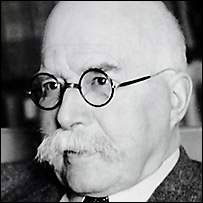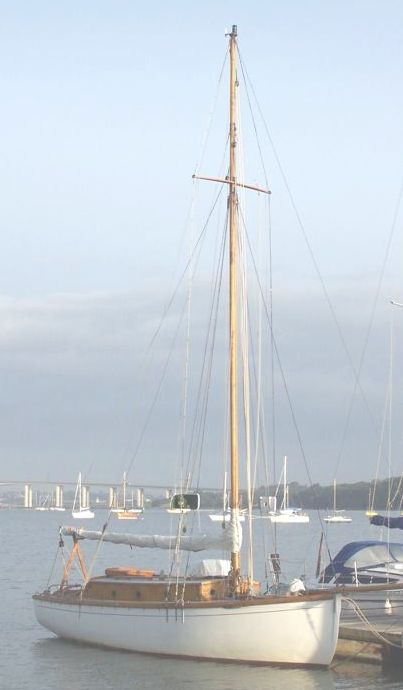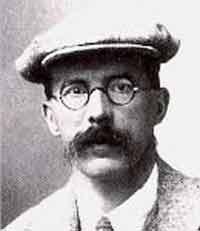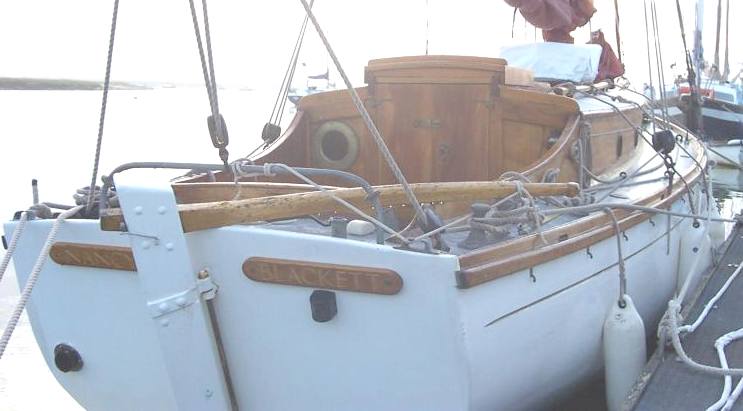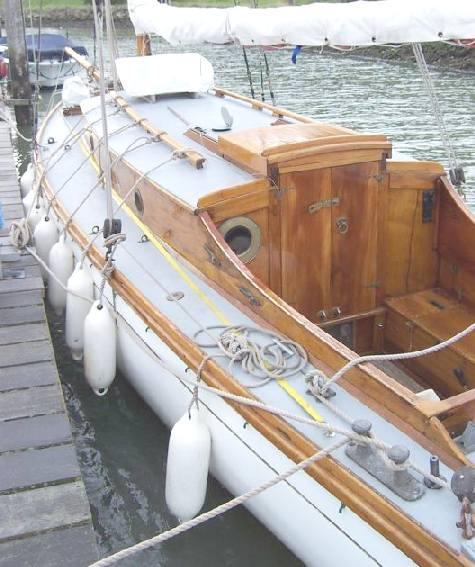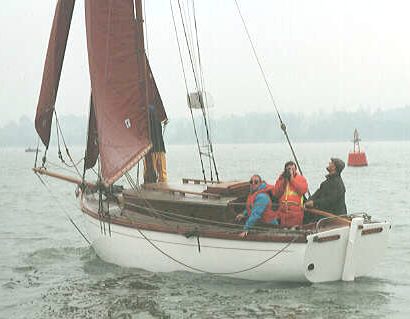Nancy
Blackett is one of the boats once owned by Arthur Ransome,
author of the 'Swallows and Amazons' books. He named her after his
favourite character, and he put her in his book 'We Didn’t Mean to
Go to Sea', as the Goblin, the
boat in which four children sail across the North Sea to Holland.
Recently rescued and restored, Nancy
Blackett is now preserved and maintained by The Nancy Blackett
Trust, as a beautiful and important part of our literary and maritime
heritage, and with the aims of inspiring interest in Arthur Ransome
and his books, and encouraging young people to enjoy sailing.
She is regularly on show at maritime festivals, and sails hundreds of
miles each year, crewed by Trust members. To find out more about the Nancy
Blackett, and how you can become involved with her, please look
around this site.
The patron of the Nancy Blackett Trust is Dame Ellen
MacArthur.
|
Arthur Ransome's - Nancy Blackett
|
|
HOME | BIOLOGY | FILMS | GEOGRAPHY | HISTORY | INDEX | INVESTORS | MUSIC | SOLAR BOATS | SPORT |
|
Arthur Ransome (January 18, 1884 – June 3, 1967), was a British author and journalist, best known for writing the Swallows and Amazons series of children's books, which tell of school-holiday adventures of children, mostly in the Lake District and the Norfolk Broads areas of England. The novels are often regarded as stories about sailing. However, whilst most of the books contain some sailing incidents, in half the books, this is only a minor element or nonexistent. Other common themes are fishing and camping. The books remain popular to the point that they provide a basis of a tourist industry around Windermere and Coniston Water — the two lakes that Ransome used as the basis for his fictional North Country lake.
Children's author Arthur Ransome
Ransome was born in Leeds, where his father lectured as a Professor of History. His father died in 1897, which had a lasting effect on Ransome who always tried to overcome his belief in his father's lack of confidence in his abilities. Ransome received his formal education first in Windermere and then at Rugby School (where he lived in Lewis Carroll's study room) but did not entirely enjoy the experience - due to his poor vision, lack of athletic skill, and limited academic achievement. He attended Yorkshire College, his father's college, for a year studying chemistry. However, he abandoned the college and went to London to become a writer. He took low-paying jobs as an office assistant in a publishing company and as editor of a failing magazine while writing and becoming a member of the literary scene of London.
In
1924, he gained a divorce, and was able to marry Evgenia
and come back to The Lake District, living first in the
Winster Valley. Apart from two periods when he went
South, he lived in Cumbria for the rest of his life,
finding inspiration and settings for Swallows and
Amazons. His last house was Hill Top at Haverthwaite.
One of the best-known children's authors of last century was suspected of being a spy by British intelligence.
Arthur Ransome wrote the book Swallows and Amazons in 1930, but also worked in the Soviet Union (which Russia used to be a part of) for British newspapers. While there British spy bosses used him to send them information, but were worried he worked for the Soviets too. They later decided that Ransome was loyal to Britain, but was very interested in the Soviet way of life.
THE NANCY BLACKETT
Nancy Blackett is a 28 feet long, 7 ton, Bermuda rigged Hillyard sailing cutter built in 1931 and now owned and operated by The Nancy Blackett Trust.
Originally named Spindrift at her launch in 1931 (and then renamed Electron by her next owner), she was bought by children’s author Arthur Ransome in 1934 and renamed Nancy Blackett after a major character in his Swallows and Amazons series of children’s books. He sailed her mostly on the east coast of England and the southern North Sea from her home port of Pin Mill near Harwich.
She is most notable for being the original for the fictional yacht Goblin in Ransome’s book We Didn’t Mean to Go to Sea which recounts a voyage across the North Sea to the Dutch port of Flushing. Ransome's cruises also provided material for another book Secret Water set in the Walton backwaters.
Ransome sold Nancy Blackett in 1939 but always said that she was "the best little ship". In 1988, she was found rotting in Scarborough and restored. The Nancy Blackett Trust was formed as a charitable organization to preserve and sail her and to promote the sort of sailing activities dear to Ransome.
HISTORIC
Nancy is now a Registered Historic Vessel, despite the fact that her size is below the current minimum for admission to the Register.
The National Register of Historic Vessels, set up in 1995, currently limits its criteria for inclusion to ships over 40ft in length, over 40 years old and built in the British Isles. This was mainly in the interests of keeping the task of registration to manageable proportions, and exceptions are very occasionally admitted. Nancy is one of an exclusive group of around 100 non-qualifying vessels on the Register which currently totals around 2,000 ships.
The National Historic Ships Committee deliberated long over Nancy's size, but eventually concluded "that her pedigree and associations qualified her for Certificate in all respects other than her size." Accordingly, she is recorded on the Register, but has not received a certificate. The scope of the register is to be extended in the next few years, and full inclusion, and certification can then be expected.
Being on the Register confers no benefits in itself, though it may be of use in any application to a grant-making body such as the Heritage Lottery Fund. Nor does it impose any special responsibilities, such as those attached to listed buildings, although it might be regarded as reinforcing a moral responsibility for preservation which we have already imposed on ourselves. It does confer a general recognition of Nancy's significance, and it is gratifying to have our own, perhaps biased, estimation of her worth formally confirmed by the maritime heritage establishment.
About the Nancy Blackett Trust
Nancy Blackett: FactsThese
are the principal vital statistics of the Nancy
Blackett.
Nancy
Blackett and Arthur Ransome History
Swallows and Amazons
Ransome settled in the Lake District. He decided not to accept a position as a full-time foreign correspondent with the Guardian and instead wrote Swallows and Amazons in 1929 - the first of the series that made his reputation as one of the best English writers of children's books.
Ransome apparently based the Walker children (the "Swallows") in the book in part on the Altounyan family: he had a long-standing friendship with the mother and Collingwood grandparents of the Altounyans. Later he denied the connection, claiming he only gave the Altounyans' names to his own characters; it appears to have upset him that people did not regard the characters as original creations.
Ransome's writing features very accurate descriptions of locations and activities. His move to East Anglia brought forth a change of location for four of the books. Ransome's own interest in sailing and need to provide an accurate description caused him to undertake a voyage across the North Sea to Flushing. His book We Didn't Mean To Go To Sea reflects this, and he based the fictional "Goblin" on his own boat Nancy Blackett (which in turn took its name from a character in the series).
Two (or possibly three) of the "Swallows and Amazons" books have less realistic plots. Peter Duck originated as a story purportedly made up by the children themselves, but Ransome dropped the introductory passage clarifying this from the published book (though Peter Duck himself features in Swallowdale as a character whom the children created). Peter Duck comprises a relatively straightforward story, but with a much more fantastic plot than the more conventional "Swallows and Amazons" books.
A trip to China as a foreign correspondent provided Ransome with the imaginative springboard for Missee Lee, a story in which readers find the Swallows and the Amazons sailing around the world in the schooner Wild Cat from Peter Duck. Together with Captain Flint (the Amazon's uncle Jim Turner), they become the captives of Chinese pirates. More controversy attaches to the final book of the series, Great Northern?. The plot and action appear realistic, but the internal chronology does not fit the usual run of school holiday adventures. Myles North, an admirer of Ransome, provided much of the basic plot of the book. CONTACT THE NANCY BLACKETT TRUST
LINKS:
Nancy Blackett
Helen
Tew (1912-2004) (vice-president of the Nancy Blackett Trust)
Arthur Ransome
Organisations
A taste for adventure capitalists
Solar Cola - a healthier alternative
|
|
This
website
is Copyright © 1999 & 2006 NJK. The bird |
|
AUTOMOTIVE | BLUEBIRD | ELECTRIC CARS | ELECTRIC CYCLES | SOLAR CARS |
